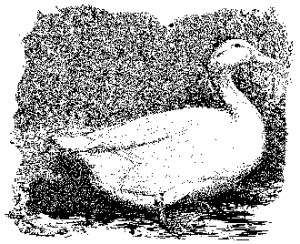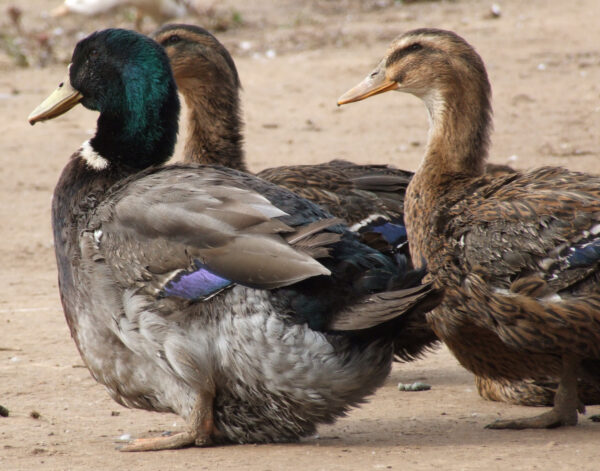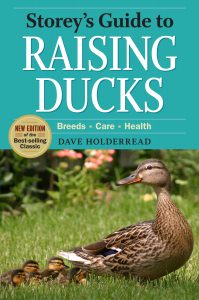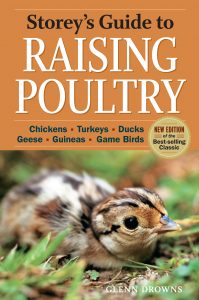
Breed Facts
Status:
Watch
Use:
Meat, Exhibition, Pets, Ornamental
Egg Color:
White
Egg Size:
Extra Large
Weight:
Male – 10-12 lbs.
Female – 9-10 lbs.
Temperament:
Docile
Characteristics:
Hardy; Doesn’t fly; Active foragers
ROUEN – NON-INDUSTRIAL DUCK
“Among the domestic ducks raised by French farmers several hundred years ago were some resembling large Mallards. Around 1800, these ducks reached England, where they were variously called “Rhone,” for an area in southwest France, “Rohan,” for a Catholic Cardinal, “Roan,” a mixture of colors, and finally “Rouen,” for a town in north-central France.” (Holderread).
Once the Rouen arrived in England, breeders began to redesign the bird through selective breeding. They doubled its size, transformed its sleek body into a thickset boat shape, and improved its colors. In 1850, Mr. D. W. Lincoln of Worcester brought Rouens to the United States and the breed soon became popular as a colorful, general-purpose farm duck.
“The Rouen was first included in the American Poultry Association (APA) Standard of Perfection in 1874 and has since been considered by breeders to be the ultimate exhibition duck for its beauty, size, and challenge involved in breeding truly good show specimens.” (Holderread)
Rouens come in two distinct shapes. The Standard Rouen is a massive duck that reaches a weight of 9-10 lbs. It has a horizontal carriage, a large, blocky body with a deep, level keel, and a back that arches from shoulders to tail. The head is round with a medium-size bill that is concave along the top line. (The Production Rouen averages 2 pounds less than the Standard Rouen and has a trimmer body and more upright carriage. It is not considered endangered.)
The Rouen drake has a dark yellow bill, bright orange shanks and feet, and black eyes. His head, upper neck, and tail are dark green, lower neck and breast are dark brown, the upper back is dark gray, and lower body light gray. A white band encircles his neck, and a diagonal white/blue/white line crosses his wings. A Rouen duck has a brown bill, dark orange shanks and feet, and black eyes. She also has the diagonal color pattern on her wings, but the rest of her plumage is brown with black texturing. Breeders also developed and exhibited Black, Blue, Fawn, and Pastel varieties, none of which have been accepted by the APA.” (Holderread)
“When choosing Rouen breeders, emphasis should be placed on vigor, strong legs, large size, good body length, deep keels that are straight and level, horizontal body carriage, and proper color markings.” (Holderread)
Rouens are docile birds that are valued for their meat. They are variable layers, producing 35-125 white to blue or green-tinted eggs yearly, but make fine roasting ducks and have abundant, delicately-flavored flesh. Their meat is said to have a lighter flavor than the meat of other duck breeds. This unsurpassed gourmet quality comes at a price, though, as Rouen ducks are slow to mature. While this slow maturation (6-8 months) makes them impractical for commercial meat production, Rouens are suitable for the home or small farm. (Batty)
In Standard Rouens, overly-developed keels can cause breeding problems for drakes, so it is advised to retain some males for breeding that are not as extreme in size and keel development. Standard ducks are so heavy that they tend to crush their eggs if allowed to sit them.
They are docile and easy to handle and raise as pets, although occasionally drakes will guard a duck on her nest and chase anyone who comes near her territory. They are a healthy breed but can be prone to bumblefoot due to their size and inability to fly. They can cut their feet on rough surfaces and get infections. As they do not move quickly and do not fly, you need to be sure they are kept safe from predators. They do well if allowed to forage and free-range. This breed is not as noisy as some other breeds, but they can be talkative – especially the females. They do well in hot or cold climates when provided with proper housing. This breed can be a good choice for a beginner.
Domesticated Ducks and Geese. Batty, Dr. J. London, England: Fanciers Suppliers Ltd, 1985.
Storey’s Guide to Raising Ducks. Holderread, Dave. Pownal, VT: Storey Communications, Inc., 2001, 2011.
Did you know:
The Livestock Conservancy is America’s leading organization working to save over 150 heritage breeds from extinction. We rely on the support of our members, grants, and donations from the public to raise the $700,000 a year needed to maintain our conservation work with rare breeds of farm animals. Click here to learn how you can help.

Breed Facts
Status:
Watch
Use:
Meat, Exhibition
Egg Color:
White
Egg Size:
Extra Large
Market Weight:
7-9 lbs
Temperament:
Docile
You may be interested in…




